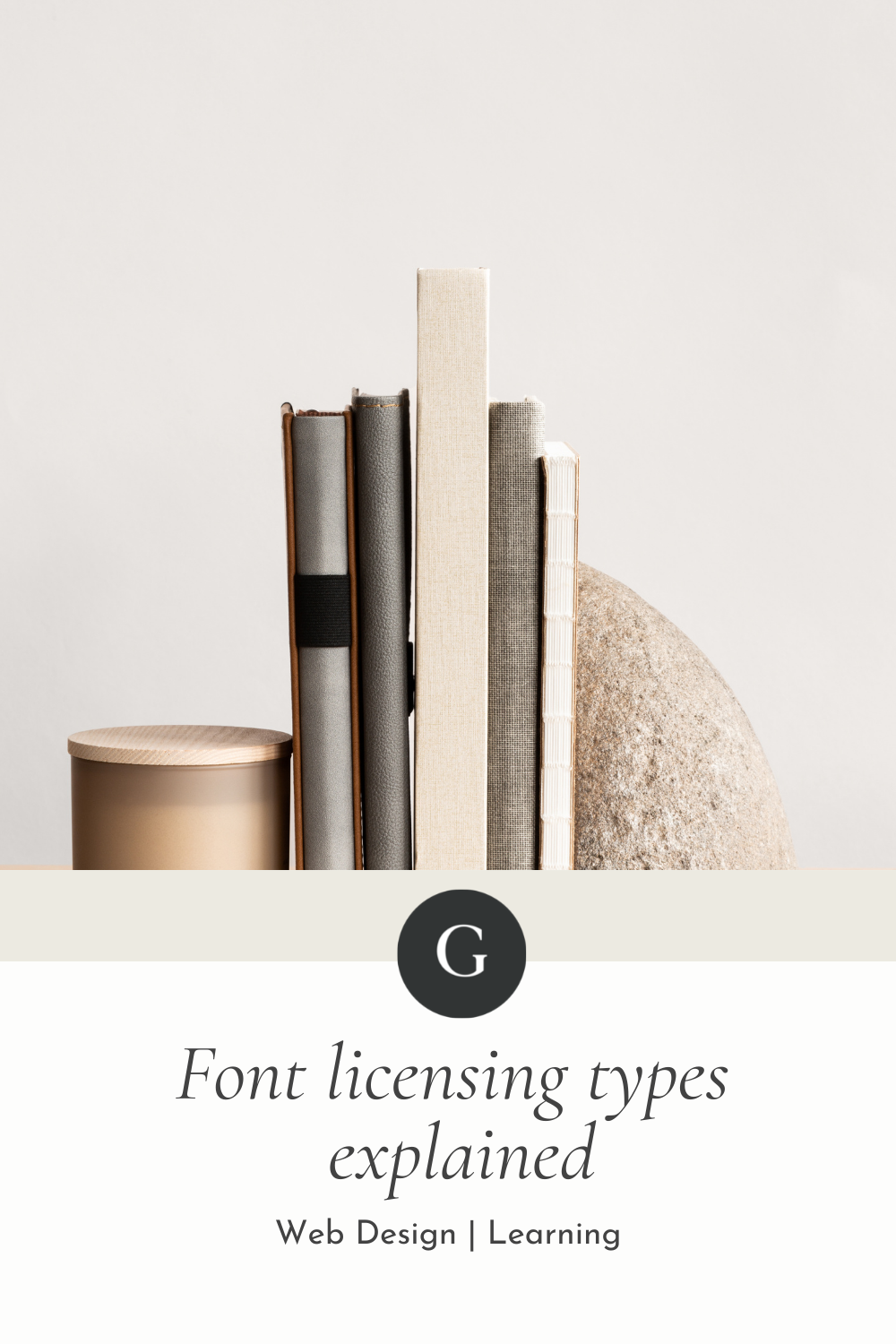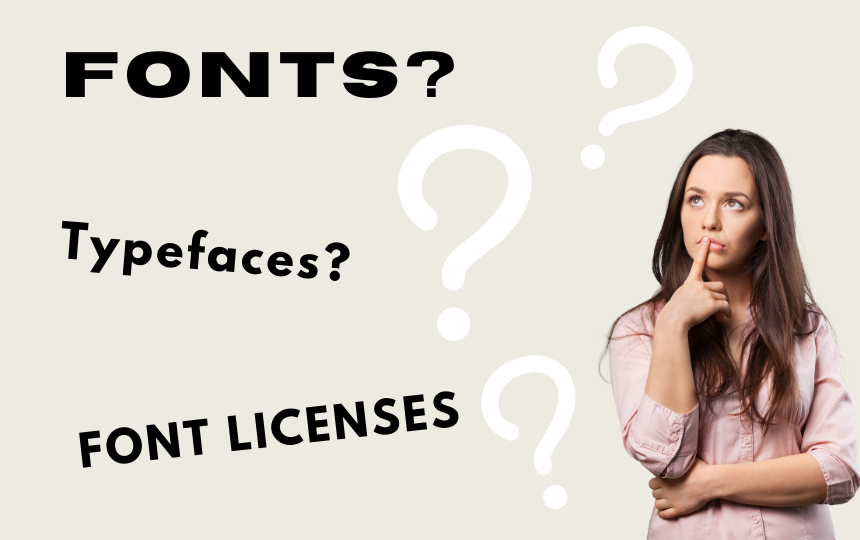
I'm Naomi, Vancouver's go-to expert in web and brand strategy, and I'm passionate about helping businesses thrive online. With years of experience and a creative approach, I'm dedicated to delivering tailored solutions that elevate your brand presence and drive meaningful results.
MORE ON NAOMI
PEEP THE INSTA
November 20, 2023
So, you’ve found the perfect font. But hold up—can you actually use it on your website without getting into trouble?

Font licensing might seem a bit daunting, but let’s simplify it together!
What’s the difference between a FONT and a TYPEFACE?
Think of a typeface like the entire family—mom, dad, siblings, the whole crew—while a font is one specific member of that family, like bold Arial or italic Arial.
A font, on the other hand, is a specific subset of characters in a particular size, weight, and style.
For instance, Arial is a typeface, but within Arial, you have variations like italic and bold.
Got it? Cool! Now let’s chat about the different types of licenses, because, trust me, this part is important.
Font licensing types explained
EULA/ Desktop License:
(End User License Agreement) This is the most common type of license and covers most commercial uses.
You’re free to install the font and use it in your favorite design apps, like Illustrator or Photoshop, to create cool stuff—think logos, business cards, or even custom t-shirts!
You can also create and print documents, as well as make static images (JPEG, TIFF, PNG), graphical designs (logos, or signs), and also on products (shirts, hats, mugs).
Always check how many products and users the license covers before purchasing.
Personal Licensing:
Personal use sounds chill, but be careful—this means no client projects or anything you plan to sell.
You cannot create a logo to sell to a client with only Personal Licensing.
This type of license often limits the number of websites or social platforms where the font can be used.
Commercial Licensing:
Commercial licensing is where things get real.
If you’re working with clients, this is your go-to, but keep an eye on the fine print.
Some licenses will say things like ‘up to 5,000 products,’ which means if your design is going on merch or marketing materials, make sure you’re covered.
E-Pub License:
With an E-PUB license, you can use the font in eBooks and eMagazines that are sold to end-users.
The number of eBooks you can create depends on your selected plan at the checkout page of where you plan to purchase your font from.
If you plan to use the same font for your website, you will need to purchase a Webfont license to do so.
Webfont License:
Purchase a Webfont license if you want to use the font on your website.
The price depends on how popular your site is—whether it’s a chill 100 visitors a month or 100,000 fans flocking to your content!

Key tips for font licenses!
First, never resell a font! that’s a HUGE no-no!
If you use a font for a client’s project, note which font was used and provide a link for them to purchase or download it themselves.
Secondly, buying fonts for your business is ideal to avoid any legal issues down the road. You can buy beautifully designed fonts from sites like creativemarket and designcuts.
PRO TIP** If you’re ever unsure, just do a quick Google search with your font’s name. Better safe than sorry, right?
To keep things simple, consider downloading fonts from reputable sources like Google Fonts.
Good luck and have fun finding your perfect font match!
Font Licensing Types Explained
© GINZA DESIGN | VANCOUVER WEB DESIGN & BRANDING